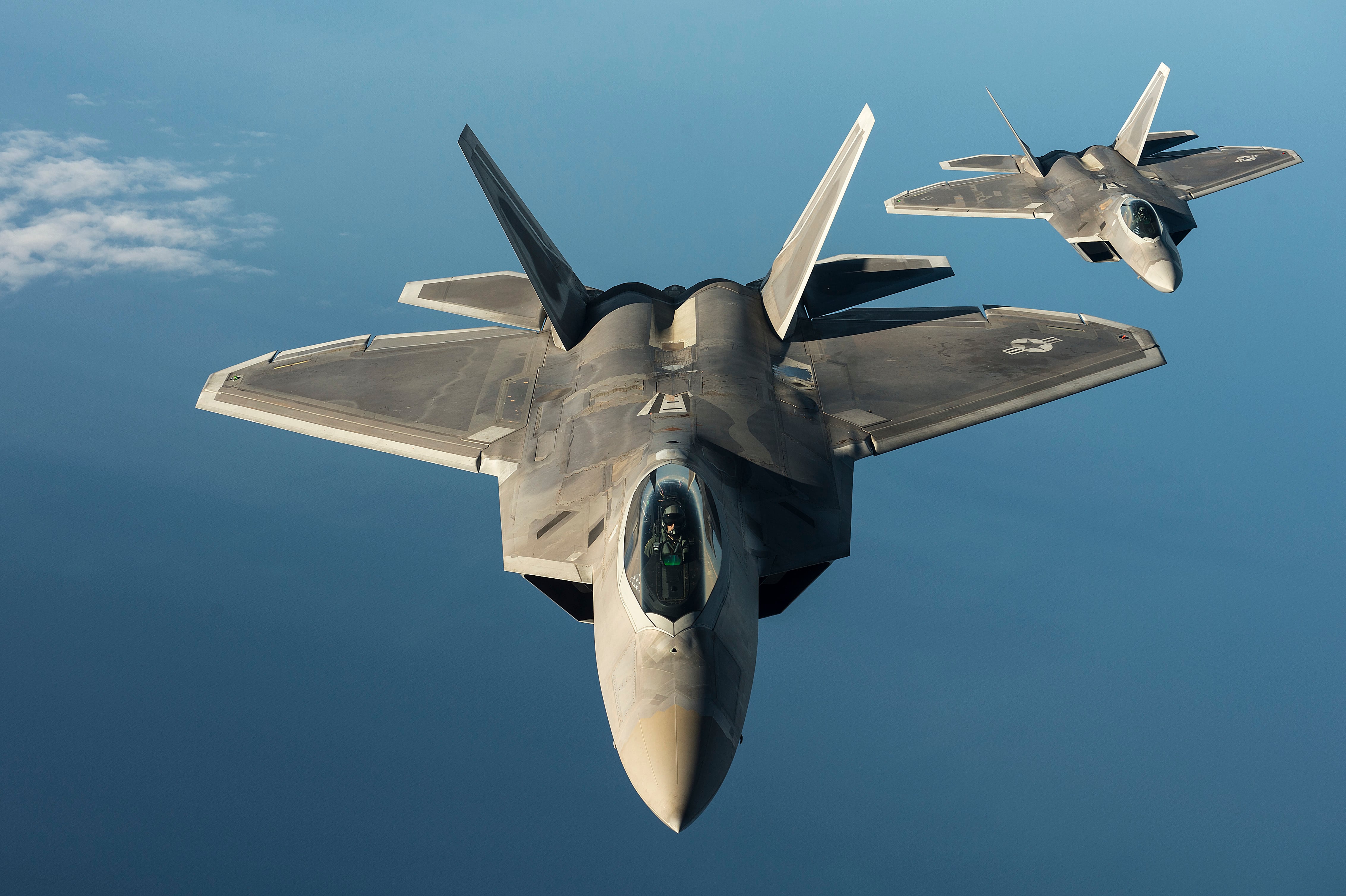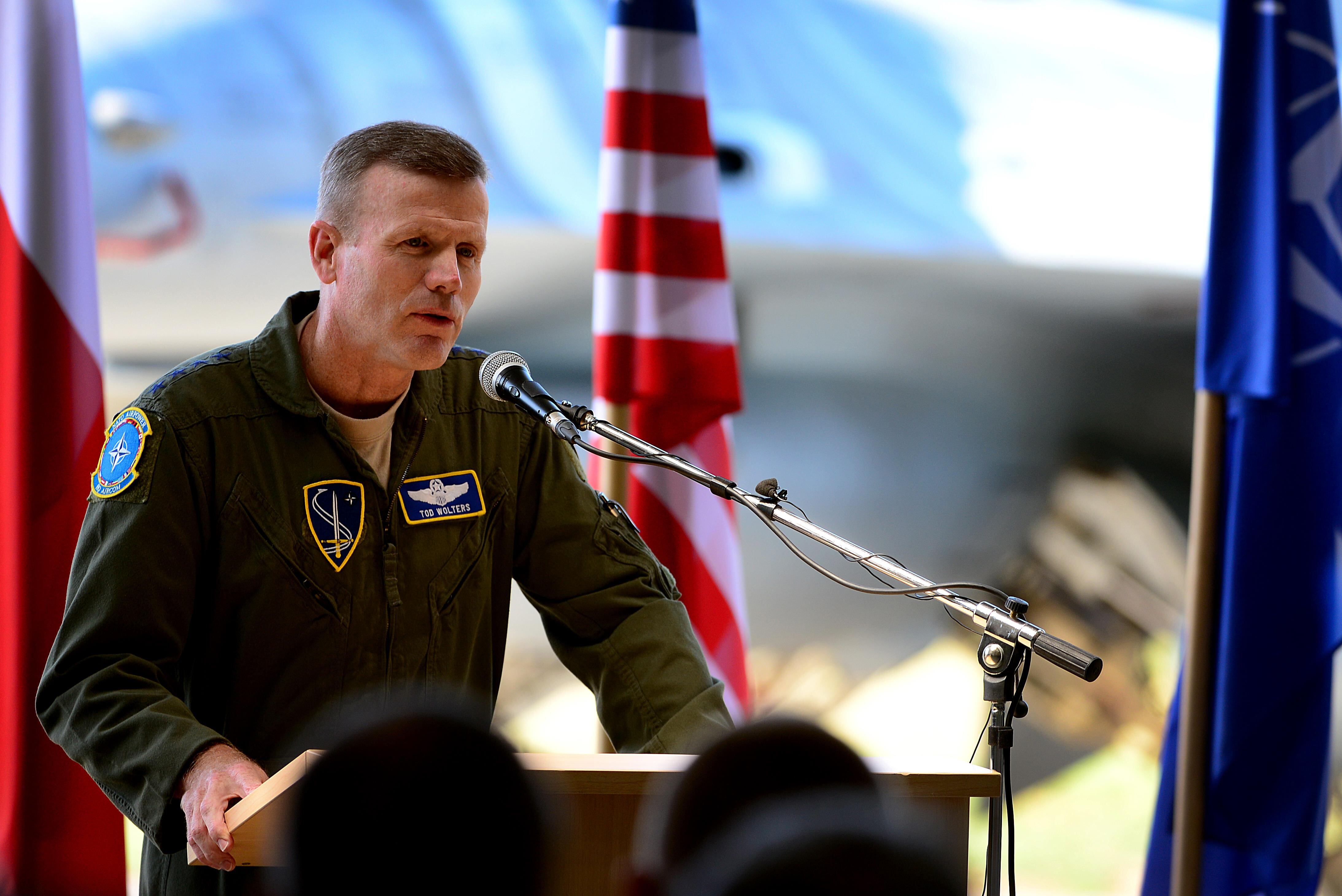The four-star general in charge of U.S. Air Forces in Europe-Air Forces Africa on Thursday highlighted recent deployments and exercises meant to show support for European allies.
But in a conference call with reporters, NATO Allied Air Command and USAFE commander Gen. Tod Wolters said he has not seen a dramatic increase or decline in Russian aviation activity, and said the vast majority of U.S.-Russian encounters are safe.
Wolters pointed to recent deployments of F-15s, F-16s, and B-52s as examples of U.S. support for allies.
“These rotational deployments demonstrate responsive air power capabilities and interoperability while strengthening relationships with our allies and partners,” Wolters said.
Four F-15C Eagles from the 48th Fighter Wing at RAF Lakenheath in England finished a four-month rotation to Lithuania on Jan. 8 as part of NATO’s Baltic Air Policing mission.
Those F-15s, from the 493rd Expeditionary Fighter Squadron, flew about 300 hours during more than 170 sorties to support NATO, Wolters said.
During that time, they were on alert for more than 3,000 hours and scrambled nearly 60 times “in response to unusual or questionable air activity,” he said.
A USAFE release from January said the F-15s partnered with Belgian air force F-16s, and conducted about 30 intercepts.
RELATED

Four B-52 Stratofortresses from the 5th Bomb Wing at Minot Air Force Base in North Dakota, along with about 300 airmen and support equipment, also wrapped up a deployment to RAF Fairford in England on Jan. 30.
The B-52s, from the 23rd Expeditionary Bomb Squadron, flew 36 sorties to support U.S. European Command’s bomber task force.
Wolters said they conducted joint and allied training to improve bomber interoperability.
Also in January, 12 F-16s and about 300 airmen from the Ohio Air National Guard’s 180th Fighter Wing deployed to Estonia as a theater security package to support Operation Atlantic Resolve. Another 75 airmen from the 52nd Fighter Wing at Spangdahlem Air Base in Germany also deployed.
Wolters also said C-130s from Dobbins Air Reserve Base in Georgia and the Illinois Air National Guard deployed to Portugal in support of an exercise called Real Thaw 18. C-130s also deployed to Poland for joint readiness training.
And 14 F-15E Strike Eagles and roughly 300 support personnel from Lakenheath’s 48th Fighter Wing arrived in Greece earlier this month to take part in a Greek-led multilateral flying exercise called INIOHOS 18. That exercise between NATO allies and partner nations began March 12 and is expected to end March 23.

The Air Force’s participation in theater security packages and Baltic Air Policing missions is part of its support for the European Deterrence Initiative, which is expected to cost more than $1 billion this year.
The budget for EDI ― which is intended to deter Russian aggression and bolster allies in the region ― supports the prepositioning of Air Force equipment and infrastructure improvements in at least six nations, Wolters said.
A series of close encounters between Russian aircraft and NATO ships and aircraft over the last few years has raised alarms in the Pentagon. But Wolters characterized the pace of encounters going back to 2015 as steady, and said there is “nothing with a dramatic increase, nothing with a dramatic dropoff.”
USAFE documents, tracks and characterizes each encounter with Russian aircraft, Wolters said. But in more than 95 percent of those aerial encounters, Russian aircraft were observed to be operating safely, he said.
“It’s my job as the NATO AIRCOM [Allied Air Command] commander to ensure that our forces are ready,” Wolters said. “I focus on our forces’ responsiveness, I focus on their resiliency, and I focus on their lethality. Their job in life is to protect the sovereign skies of our great NATO nations. We do so via a very robust exercise and training scenario calendar.”
Wolters said that training and exercise activities will have a small increase in size in 2018 over the previous year, compared to a larger increase between 2016 and 2018.
Wolters also said NATO allies in Europe and Canada have increased their defense spending over the last three years. Eight countries this year are already spending 2 percent of their budgets on defense, and another 15 are on pace to reach or exceed that level by 2024. NATO has 29 member nations.
“We feel that the trajectory of spending is improving, and I’m firmly convinced that given this trajectory, we’re on the right glide path for future success,” Wolters said.
Stephen Losey is the air warfare reporter for Defense News. He previously covered leadership and personnel issues at Air Force Times, and the Pentagon, special operations and air warfare at Military.com. He has traveled to the Middle East to cover U.S. Air Force operations.



